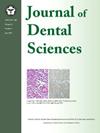Comparisons of precision and trueness of digital dental casts produced by desktop scanners and intraoral scanners
IF 3.4
3区 医学
Q1 DENTISTRY, ORAL SURGERY & MEDICINE
引用次数: 0
Abstract
Background/purpose
Different types of scanners are gradually used to produce digital dental casts in the current dental practice. This study tested the accuracy of the three desktop scanners and two intraoral scanners and evaluated whether the desktop scanners had higher precision than the intraoral scanners.
Materials and methods
This study used the three desktop and two intraoral scanners to scan a standard dental cast 5 times. The 5 digital casts produced by the same scanner were compared each other to study the precision errors of each scanner. Moreover, 5 sets of the 5 digital casts produced by the 5 different scanners were compared each other to investigate the trueness errors among these 5 different scanners.
Results
This study showed a significant difference in the precision error of produced digital casts made by the 5 different scanners (P < 0.0001). The two intraoral scanners had significantly higher precision errors of produced digital casts than the three desktop scanners. However, there were no significant differences in the precision errors among the three desktop scanners and between the two intraoral scanners. The results of the whole cast or particular tooth surface trueness analyses demonstrated that the trueness errors were concentrated at the molar regions of produced digital casts when comparisons were performed between the intraoral and desktop scanners.
Conclusion
We conclude that the desktop scanners can achieve a better precision than the intraoral scanners. When the intraoral scanner is used, the dentist should notice the possible model errors at the molar regions.
桌面扫描仪和口内扫描仪制作的数字牙模精度和准确性的比较。
背景/目的:在目前的牙科实践中,不同类型的扫描仪逐渐被用于制作数字化牙科模型。本研究测试了三台台式扫描仪和两台口内扫描仪的精确度,并评估了台式扫描仪是否比口内扫描仪具有更高的精确度:本研究使用三台台式扫描仪和两台口内扫描仪对标准牙模进行了 5 次扫描。将同一台扫描仪制作的 5 个数字石膏进行比较,以研究每台扫描仪的精度误差。此外,还对 5 台不同扫描仪制作的 5 套数字铸模进行了比较,以研究这 5 种不同扫描仪之间的真实度误差:研究结果表明,5 种不同扫描仪制作的数字铸模的精度误差存在明显差异(P 结论:5 种不同扫描仪制作的数字铸模的精度误差存在明显差异:我们得出结论,台式扫描仪比口内扫描仪能获得更好的精度。使用口内扫描仪时,牙医应注意臼齿区域可能存在的模型误差。
本文章由计算机程序翻译,如有差异,请以英文原文为准。
求助全文
约1分钟内获得全文
求助全文
来源期刊

Journal of Dental Sciences
医学-牙科与口腔外科
CiteScore
5.10
自引率
14.30%
发文量
348
审稿时长
6 days
期刊介绍:
he Journal of Dental Sciences (JDS), published quarterly, is the official and open access publication of the Association for Dental Sciences of the Republic of China (ADS-ROC). The precedent journal of the JDS is the Chinese Dental Journal (CDJ) which had already been covered by MEDLINE in 1988. As the CDJ continued to prove its importance in the region, the ADS-ROC decided to move to the international community by publishing an English journal. Hence, the birth of the JDS in 2006. The JDS is indexed in the SCI Expanded since 2008. It is also indexed in Scopus, and EMCare, ScienceDirect, SIIC Data Bases.
The topics covered by the JDS include all fields of basic and clinical dentistry. Some manuscripts focusing on the study of certain endemic diseases such as dental caries and periodontal diseases in particular regions of any country as well as oral pre-cancers, oral cancers, and oral submucous fibrosis related to betel nut chewing habit are also considered for publication. Besides, the JDS also publishes articles about the efficacy of a new treatment modality on oral verrucous hyperplasia or early oral squamous cell carcinoma.
 求助内容:
求助内容: 应助结果提醒方式:
应助结果提醒方式:


